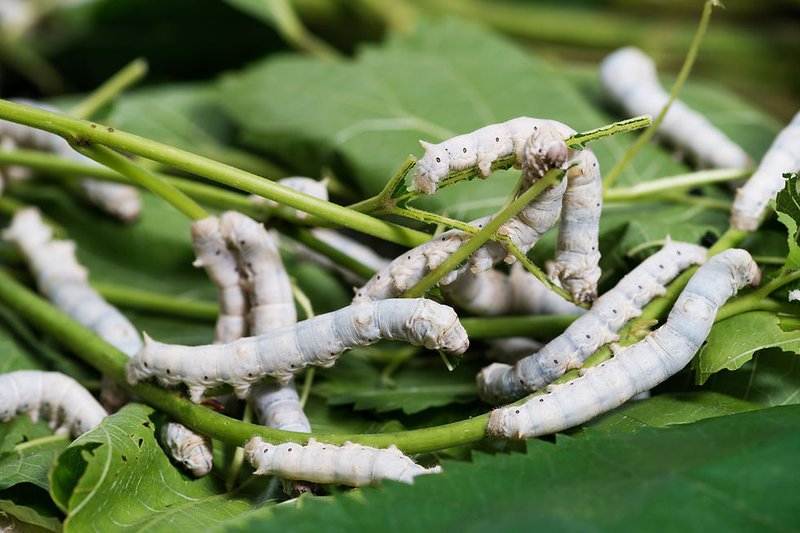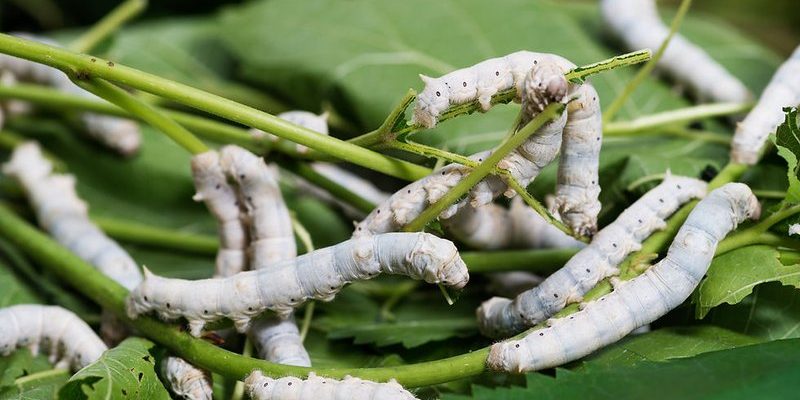
You might be wondering why we’d want to look back at something that seems so outdated. Well, silkworms, or *Bombyx mori*, aren’t just important for their silky threads. They offer sustainability and economic benefits that more modern practices can overlook. Let’s explore how silkworm farming continues to be valuable in our fast-paced world.
The History of Silkworm Farming
To understand why silkworm farming matters today, let’s take a quick detour into history. This practice dates back thousands of years, with origins in ancient China. Back then, silk was such a prized commodity that it was often referred to as “the fabric of the gods.” The process of raising silkworms is intricately tied to the cultural heritage of many countries, especially in Asia.
Fast forward to today, and silkworm farming still plays a crucial role in countless economies. In places like India and China, traditional farming practices blend seamlessly with modern techniques. Farmers often use a mix of old wisdom and new technology—like climate monitoring tools—to improve their yields. This is not just about nostalgia; it’s about finding balance and sustainability in our agricultural practices.
Silk remains a luxury item, but it’s not just confined to high-end fashion. Think about home decor, medical sutures, and even cosmetics—yes, silk proteins are in some skincare products! The versatility of silk keeps this industry thriving, making silkworm farming more relevant than ever.
Economic Impact of Silkworm Farming
When we think about why silkworm farming is still relevant, the economic benefits are hard to ignore. This practice provides jobs and support for millions of farmers around the world. In countries like India, China, and Thailand, those who raise silkworms often rely on this income as their primary source of livelihood.
Moreover, silkworm farming is relatively low cost. It doesn’t require large amounts of land or expensive equipment, making it accessible for many families. Farmers can start small, and as they gain experience, they can gradually expand their operations. This makes it an attractive option in developing regions where resources may be limited.
Additionally, silk has a high market value. While other crops may offer lower returns, silk consistently holds a premium price. This means that even a small plot dedicated to silkworm farming can yield significant profits, which helps boost local economies. When families thrive, entire communities often benefit.
Environmental Sustainability of Silkworm Farming
In today’s world, where environmental concerns loom large, *silkworm farming stands out for its sustainability*. Silkworms primarily feed on mulberry leaves, a crop that requires fewer resources than many other farming practices. Plus, they produce a natural fiber that is biodegradable—unlike synthetic materials that can linger in landfills for centuries.
Here’s the thing: traditional silkworm farming practices often involve minimal use of harmful chemicals. Many farmers adhere to organic methods. This not only benefits the environment but also ensures that the silk produced is free from toxic residues, making it safer for consumers.
Additionally, the byproducts of silkworm farming can be valuable. The leftover leaves, known as “sericulture waste,” can be used as animal feed or compost, contributing to a circular economy. This means that the process of raising silkworms can promote sustainability and reduce waste—something we should all aim for in our daily lives.
The Role of Technology in Modern Silkworm Farming
Technology is transforming silkworm farming in exciting ways. Farmers now use apps to monitor climate conditions, track growth, and even manage disease outbreaks. This tech-savvy approach helps maximize yields and reduces losses, which is crucial for maintaining profitability.
One fascinating development is the use of genetic engineering. Scientists are working on modifying silkworms to produce even stronger and more sustainable silk—imagine creating silk that’s more robust than ever before. While such advancements might sound a bit sci-fi, they represent a bridge between tradition and innovation.
Moreover, drones are making their way into silkworm farming too. Farmers can use drones for aerial surveys of their fields, helping them identify areas that need attention, whether it’s pest control or irrigation. This kind of precision farming is not just efficient; it also enhances productivity, ensuring that the silkworms can thrive.
Health Benefits and Applications of Silk
Silk is more than just a luxurious fabric; it has some surprising health benefits too. The proteins found in silk, known as sericin, have natural properties that can help in wound healing and skincare. This is one reason why you’ll find silk in various cosmetic products, as it can promote hydration and improve skin texture.
Doctors also use silk sutures in surgeries due to their strength and natural compatibility with human tissue. This makes silk not only a fashion statement but also a significant player in the medical field. Isn’t it amazing how something as simple as a silkworm can contribute to both style and health?
Furthermore, silk’s hypoallergenic properties make it a preferred choice for bedding and clothing, especially for people with sensitive skin. By promoting better quality of life, silk can positively impact overall well-being.
The Future of Silkworm Farming
Looking ahead, the future of silkworm farming appears promising. With the growing focus on sustainability and ethical practices, many consumers are becoming more interested in the origins of their clothing and fabrics. This shift could lead to a resurgence in demand for quality silk, making silkworm farming even more relevant.
New markets are opening up too. While traditional silk markets still thrive, there’s a growing interest in niche segments—like eco-friendly or organic silk—driven by conscious consumerism. This means that farmers who adapt to these new trends can tap into lucrative opportunities.
Challenges remain, of course, from climate change to competition with synthetic fibers. But with innovation at its core, silkworm farming has the potential to overcome these hurdles and continue thriving in the modern world. It’s a fascinating example of how ancient practices can evolve while still holding significant relevance today.
Silkworm farming is much more than just raising insects for their fibers; it’s a rich tapestry woven into the fabric of global economy, sustainability, and health. From its historical roots to its modern innovations, silkworm farming stands out as a shining example of how traditional practices can remain relevant in a rapidly changing world.
Whether it’s supporting local economies, promoting environmental sustainability, or even contributing to advances in healthcare, the impact of silkworm farming is undeniable. Next time you see a beautiful silk scarf or a luxurious silk shirt, you might just think of the tiny silkworms that played a crucial role in bringing that fabric to life. Isn’t it fascinating how something so small can have such a big impact?

